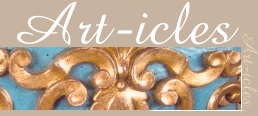      
|

Eighteenth century Italian palace furniture (date : 01 October 2001), The palaces distinguished themselves from other residences through their symbolism; they bore witness to the wealth, power and possibly the culture of their occupants. This role of "personalised propaganda" had to be as noticeable on the interior as the exterior. From this fact sprung the double arrangement of the interior, the 'show' apartments on one hand and the rooms for family use on the other. Up to and including the 18th century, private apartments contained collections of clever or aesthetic finds. In fact, in France the solemn receptions appreciated under Louis XIV were abandoned in favour of dinners with a smaller number of guests. In this way, rooms for parties and rooms for living in were the same. In Italy the phenomenon differed somewhat as the idea of luxury was closely linked to ostentation. Therefore Italian baroque furniture kept its place of importance in rooms of state which were conserved until the time of neo-classicism. Thus, the Buonaccorsi gallery (Macerata, 1707) is furnished with great gilded and carved consoles (palace furniture par excellence). Otherwise, the furniture is rather delicate as the complaints made by the President of Brosse regarding the chairs testify during a visit to the Foscari Palace in Venice in 1739. The function, rather more decorative than useful, of the armchairs and tables of Antonio Coradini (Rezzonico Palace, Venice) explains the delicate finesse of their ornamentation. In 1716, Lady Mary Wortley Montagu, travelling in Italy, summarised perfectly the atmosphere of these palaces in noting in her journal that comfort was not unknown there even if tastes remained very traditional. The Italians came to attach more importance to the rooms used on a daily basis. These received special treatment: the dining room or 'saleta' was in common use in 1750 while the bathroom, for reasons of pleasure as well as hygiene, appeared on 1798. Against this changing background, catalogues were printed, circulating the new ideas; 'Invenzioni diverse di mobili ed utensigili (...) per usi communi della vita' by Pietro Ruga, Milan 1811, 'Magazzine di Mobilia' appeared for the first time in Florence in 1795. The furniture produced for the Caraglio Palace in Turin in 1760 would not have seemed out of place in a Parisian townhouse a decade earlier. The furniture was extremely dependent on the interior decoration; it had to integrate perfectly; for example the curves of the chairbacks had to follow those of the wooden mouldings and the stucco. Filippo Juvarra, architect of the Savoy Court, produced numerous table designs and certainly supplied sketches for furniture for the buildings that he conceived. Similarly, Count Benedetto Alfieri designed the gallery of the Philharmonic Academy (Turin 1760) with chairs and tables that fit so naturally into the general layout that their absence or displacement shocks the visitor's eye. Tiepolo also produced projects for furniture. The Roman aristocracy kept its preference for carved furniture. When Antonio Aspuci tackled the renovation of the Villa Borghese in the 1770s, he furnished the galleries with large tables on supports of marble in the shape of winged lions. The Vatican, a supporter of the first order, ordered quality pieces, for example a superb marquetry desk around 1770-1780 for Pope Pius VI, or a mounted bookcase composed of eight bronze Hercules, designed by Vincenzo Pacetti and cast by Giuseppe Valadier in 1789. The framed mirror is a constituent element. It often matches a table, making a pair. It had an important place, equal to that of paintings, in the realisation of the decoration. Thus 'The travels of a Frenchman in Italy' in 1765-1766 describes the Stupinigni Castle where Juvara had thought to place mirrors on the walls and small pieces of mirror in the stucco ceiling. The Rezzonico Palace (Venice) contains original mirrored doors with painted bevels. There are many more examples; The royal palaces of Turin, Genoa, Bagheria and Palermo, Isnardi Palace in Castello, Litta Palace in Mantua, Riccardi Palace in Florence, Palagonia, etc, and of course the Italian Embassy in Paris. A brief commentary by a traveller in 1765 about the Turin Royal Palace testifies to the effect achieved: "The furniture matches the beauty of the apartment; one notices there, among other things, candle holders whose reflectors are mirrors set in solid silver frames worked with much taste. We only make this remark however because this piece of furnishing is very much in use in Italian apartments, ordinarily it is placed around the periphery of the room to throw more light there." |
  |
|||
|
|||||